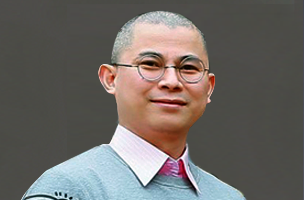Legal Practice in VIETNAM
Bud & Prairie are profusely expert and experienced to advise and assist you with other legal matters.
As you may be aware, legal practice in Vietnam involves navigating a complex legal system influenced by local laws, regulations, and international standards. Here’s a comprehensive overview of legal practice in Vietnam, including the legal framework, the role of legal professionals, and key considerations for those practicing law in the country:
1. Legal Framework
1.1 Constitution and Laws
- Constitution: The Constitution of Vietnam is the highest legal document, outlining the fundamental principles of the state and its legal system.
- Laws and Codes: Key laws include:
- Civil Code: Governs civil rights, obligations, and relationships.
- Commercial Code: Regulates commercial activities and business transactions.
- Criminal Code: Defines criminal offenses and penalties.
- Administrative Procedures Law: Governs administrative procedures and dispute resolution.
1.2 Regulatory Bodies
- National Assembly: Vietnam’s legislative body responsible for enacting laws.
- Government: Implements laws and regulations through various ministries and agencies.
- Supreme People’s Court: The highest judicial authority, overseeing the court system and legal interpretations.
- Ministry of Justice: Manages legal affairs, legal reform, and the legal profession.
2. Legal Professionals
2.1 Lawyers
- Types of Lawyers:
- Litigation Lawyers: Represent clients in court cases and legal disputes.
- Transactional Lawyers: Handle business transactions, contracts, and advisory services.
- Qualifications: Lawyers must hold a law degree from a recognized institution, pass the bar examination, and fulfill other licensing requirements.
- Bar Association: Lawyers are members of the Vietnam Bar Federation, which regulates and oversees the legal profession.
2.2 Legal Consultants
- Role: Provide legal advice, draft contracts, and assist with regulatory compliance but do not represent clients in court.
- Qualifications: Typically have legal training and expertise but are not required to pass the bar examination.
2.3 Notaries
- Role: Authenticate documents, certify signatures, and witness transactions.
- Regulation: Notaries are regulated by the Ministry of Justice and must meet specific qualifications and licensing requirements.
3. Legal Practice Areas
3.1 Corporate and Commercial Law
- Business Formation: Advising on company formation, mergers, and acquisitions.
- Contracts: Drafting and negotiating commercial contracts.
- Compliance: Ensuring adherence to local regulations and international standards.
3.2 Intellectual Property Law
- Registration: Handling trademark, patent, and copyright registration.
- Enforcement: Protecting IP rights through enforcement actions and litigation.
3.3 Real Estate and Construction Law
- Transactions: Advising on real estate transactions, leasing, and development projects.
- Regulations: Navigating local regulations and obtaining necessary permits.
3.4 Labor and Employment Law
- Employment Contracts: Drafting and reviewing employment contracts.
- Dispute Resolution: Handling employment disputes and compliance with labor laws.
3.5 Dispute Resolution
- Litigation: Representing clients in civil, criminal, and administrative court cases.
- Arbitration and Mediation: Handling alternative dispute resolution methods.
4. Key Considerations for Legal Practice
4.1 Understanding Local Laws and Regulations
- Legal Research: Stay updated with changes in laws and regulations.
- Local Expertise: Work with local experts to understand specific legal and regulatory nuances.
4.2 Compliance and Ethics
- Professional Conduct: Adhere to ethical standards and professional conduct codes set by the Bar Association and relevant authorities.
- Confidentiality: Maintain client confidentiality and secure handling of sensitive information.
4.3 Language and Documentation
- Language: Legal documents and proceedings are generally conducted in Vietnamese. Translation services may be required for international clients.
- Documentation: Ensure proper documentation and compliance with local legal requirements for contracts, filings, and other legal processes.
4.4 Client Relations
- Communication: Clearly communicate legal advice and procedures to clients.
- Client Management: Develop strong client relationships through professional service and effective communication.
5. Challenges and Opportunities
5.1 Challenges
- Regulatory Complexity: Navigating the complex and evolving legal landscape can be challenging.
- Language Barriers: Language differences may pose challenges in legal documentation and communication.
5.2 Opportunities
- Market Growth: Vietnam’s growing economy presents opportunities for legal professionals in areas such as business expansion, investment, and international trade.
- Legal Reforms: Ongoing legal reforms and modernization efforts offer opportunities to contribute to legal development and practice innovation.
Legal practice in Vietnam offers a dynamic and evolving environment with significant opportunities for legal professionals. By understanding the local legal framework, adhering to ethical standards, and staying informed about regulatory changes, legal practitioners can effectively navigate the Vietnamese legal landscape and provide valuable services to clients. Engaging with local experts and continuously adapting to changes will enhance success in this growing market.
For further information, please do not hesitate to contact us at bud-prairie@bud-prairie.com.
1. Patentability Search
Patentability search is also known as a novelty search, which helps identify whether or not an idea is novel and involves an inventive step (nonobvious). The most complete searches include all types of prior art to give an inventor or organization a comprehensive look at the technology landscape. A patentability search should be completed during the ideation phase, as well as prior to disclosure.
A patentability search is conducted by examining published patents that relate to your own invention to figure out whether your idea has already been patented. You can also see similar inventions, allowing you to improve and refine your own invention without infringing on someone else’s patent. And you can do all this before you have spent many hours and thousands of dollars on an idea that you can’t patent.
2. Freedom to Operate Search
A freedom to operate search (often abbreviated as FTO) determines how similar your product is to existing patents, and therefore how likely you are to infringe on a patent by making and marketing your invention. You may also see this type of search called a patent infringement search or right-to-use search.
Completing an FTO search early in the innovation cycle helps R&D teams design around existing patents. Later on, the results of the search can identify whether you may need to license other patents to bring your product to market.
3. State of the Art Search
Completing a state of the art search (also known as a product clearance or patent landscape search) allows you to examine the literature related to a specific industry, rather than around a certain technology, which may be applicable across industries. Using a state of the art search helps businesses find competitors and existing products within their field. These insights allow researchers, engineers, and leaders to make strategic decisions at any point within the innovation cycle.
4. Invalidity Search
To assess the strength of a specific patent, companies will use an invalidity search. This is also called a validity search. The results of this search determine whether or not the patent holder can claim infringement. They can also be used to decide licensing fees or value. If an invalidity search finds evidence in the form of existing, yet undiscovered, prior art, the patent should not have been granted and is unenforceable. This type of patent search is completed after a patent is granted.
5. Evidence of Use Search
Some organizations actively seek out products that infringe on their patent rights. This type of search is called an evidence of use search. To find these products, an organization or inventor will review similar patents and look for evidence the patent is utilized in a way that infringes on the searcher’s rights. Evidence of use searches happen after a patent is granted and as it matures.
6. Search Database
There are several databases in which patent searching may be done. Many databases such as USPTO, Google Patents, Free Patents Online, esp@cenet etc. are freely available, while other databases such as ThomsonInnovation, Orbit, Patbase etc. are available on the basis of a subscription. Each of these databases varies in terms of at least one of the following: Data Coverage, Search Engine, Interface.
• Google Patent Search Database. The Google search engine has revolutionized how people use the Internet. …;
• Patentscope. Patentscope is a free database put out by the World Intellectual Property Organization (WIPO)…;
• The USPTO Database…;
• Espace European Database…
The following are some of the largest and most popular patent office databases.
• Canadian Patents Database (CIPO)…;
• DEPATISnet (DPMA)…;
• Espacenet (EPO)…;
• JP-PlatPat (JPO)…;
• PatentScope (WIPO)…;
• U.S. Patent Assignment Database (USPTO)…;
• U.S. Patent Center (USPTO)…;
• U.S. Patent Databases (USPTO).
However, an inventor or applicant can also conduct their own patent search. The inventor or applicant has the advantage of often being more familiar with the art to which the invention relates, including having an understanding of the common knowledge held by persons skilled in the art and the relevant terminology.
Patent drafting is a part of how to patent an idea and is the process of writing the patent description and claims. It is at the core of every patent application. When the patent is issued or allowed, the draft serves as the specification part of the document. The patent applicants have to be more aware that depending on how well the complete specification is drafted and how precisely and correctly the claims describe the invention or the imaginary ‘boundary” is set, the easier it will be to defend it against third parties.
Normally, a patent specification covers the following parts:
• Field of Invention: It generally discloses a field to which the invention generally relates.
• Background: It discloses existing devices or methods related to the field of invention, broadly known as prior art. Background generally discloses prior art and limitations or disadvantages associated with the prior art.
• Summary of Invention: It (i) discloses the objectives of the invention, (ii) generally lists distinguishing features and advantages of the invention for which protection is being sought, (iii) summarizes the main features of the invention to be claimed, and (iv) also includes a broader explanation of the invention and briefly mentions the solution provided by the invention.
• Brief Description of Drawings (if any): If the invention includes any drawings, then this section includes a description of the drawing briefly such that a reader can get an overview of what could be disclosed by the drawing. The drawings are to be prepared in separate sheets as per different guidelines of different jurisdictions. The drawing sheets are filed with the patent specification.
• Detailed Description of Invention: It explains the different features of the invention in detail. Detailed description should be written such that a skilled person in the art can understand the invention solely after referring to this description. All claimed features and their interconnections, if any, need to be explained. In other words, all the claimed features need to be well supported in the detailed description.
• Claim(s): Claims are the most important part of a patent draft. Claims decide the scope of the protection which would be awarded to the inventor when the patent is granted. Claims are broadly divided into two categories, independent claim, and dependent claim. Every patent draft or patent application must contain at least one independent claim. Claims tend to change in course of the examination (narrower in most cases than the originally filed claims.
• Abstract: It is a technical summary of the invention. Generally, the Abstract should disclose the invention sufficiently to enable a person to perform a search for anticipation. The publication of a patent application includes publication of the abstract and representative drawing, if any.
• Drawings: Not all specifications have drawings. Such drawings, if any, would be prepared and submitted to the Patent Office in separate sheets. Different jurisdictions have different rules for allowable drawing sheets.
The significance of patent drafting and its impact on the patent protection should be conveyed to the SMEs, start-ups and inventors along with the information on importance of the patent protection in general. They should be informed that in case of any opposition or challenging the validity of their patent by a third party, a poorly drafted patent will be easily invalidated.
An opposition proceeding is an administrative process available under the patent law of many jurisdictions which allows third parties to formally challenge the validity of a pending patent application (pre-grant opposition), of a granted patent (post-grant opposition).
Once the patent application is published, an opposition may be filed within a certain time period prescribed under the applicable law. The opponent shall state the grounds for opposition and submit any evidence. If no opposition is filed during that period, the substantive examination will be carried out.
In the meantime, an applicant for a patent, any of whose claims has been twice rejected, may appeal from the decision of examiners to IP Vietnam, having once paid the fee for such appeal.
LET'S GET STARTED
Please fill in and submit the form for our assistance.




